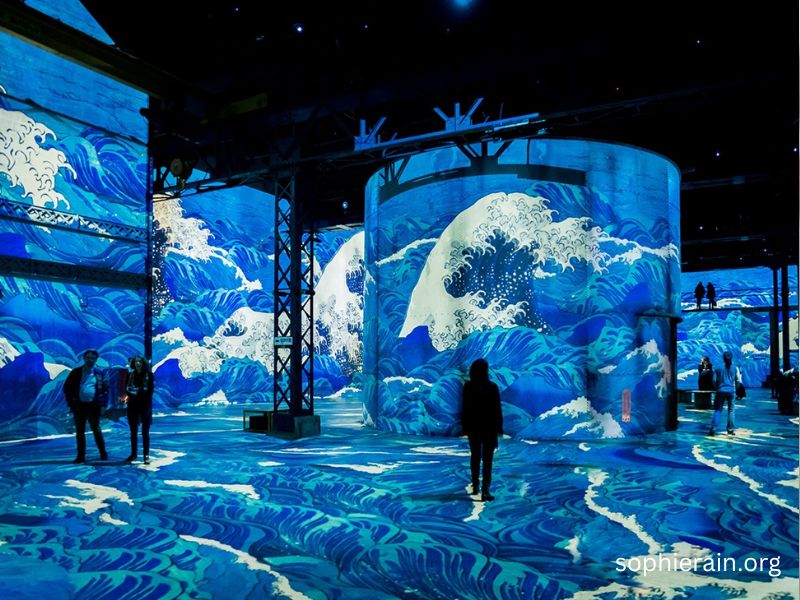Noriko Imai is a contemporary artist whose works intertwine Japanese aesthetics with personal reflections on societal transformation. Her involvement with Floating World Notes has captivated critics and art enthusiasts alike, establishing her as a key figure in modern Japanese art. The phrase “Floating World,” which originates from ukiyo-e (the art of the “floating world”) in Japan, is often associated with the transient beauty of life and the ephemeral nature of the pleasures enjoyed in the pleasure districts of Edo-period Japan. In this article, we explore how Noriko Imai taps into this historical and cultural concept, weaving it into her art.
What is “Floating World Notes”?
The concept of the floating world (Ukiyo-e) is deeply embedded in Japanese history. During the Edo period (1603-1868), the “floating world” referred to the urban culture that revolved around entertainment, fleeting pleasures, and the hedonistic lifestyle of the time, particularly within the pleasure districts. Artists like Hokusai and Hiroshige captured the essence of this world through their woodblock prints, immortalizing beautiful courtesans, actors, and scenic landscapes.
Floating World Notes refers to a broader artistic narrative where the transient, often ephemeral aspects of life are captured. For Noriko Imai, this concept has become a poignant backdrop for her exploration of memory, identity, and social evolution in modern Japan. Imai’s works reflect an ongoing dialogue between the past and the present, bringing a contemporary lens to an age-old concept.
Noriko Imai: The Artist Behind the Notes
Noriko Imai’s artistic journey can be characterized by her sophisticated blend of tradition and innovation. Drawing upon the themes of transience, beauty, and memory, Imai creates intricate, thought-provoking pieces that resonate deeply with both Japanese culture and universal human experience. Her work often explores the complexity of individual and collective memory, with a particular focus on the relationship between the artist, the audience, and the ever-changing world around them.
Her exploration of “floating world” themes is not limited to visual art; it encompasses a broader narrative, including written works like Floating World Notes. These notes are a reflection of Imai’s artistic journey, echoing the dynamic and multi-layered nature of her visual work. She masterfully employs traditional Japanese imagery to explore the themes of loss, memory, and the irreversible passage of time.
Floating World as a Metaphor
For Imai, the “floating world” is not just a reference to historical Japanese culture, but also a metaphor for the impermanence and transience of life itself. In her exploration of this concept, she invites viewers to reflect on their own relationship with time, beauty, and memory. Imai’s work encourages a reevaluation of what is valued, cherished, and ultimately lost in the flow of time.
In Floating World Notes, Imai integrates these reflections into her visual language, transforming traditional motifs into contemporary expressions. Her notes and artworks often evoke a sense of nostalgia and melancholy, tapping into the collective consciousness of a nation still coming to terms with the rapid transformation of its post-war identity.
The Influence of History on Imai’s Work
Imai’s art is deeply influenced by Japan’s complex historical landscape, particularly the aftermath of World War II. The shift from pre-war nationalism to post-war American influence dramatically reshaped Japan’s cultural, social, and political landscape. Imai reflects these changes in her work, exploring the intergenerational conflicts, loss, and the negotiation of identity that occurred as Japan rebuilt itself after the war.
Her exploration of floating world themes aligns with this historical context, providing a commentary on the fleeting nature of both personal identity and national history. Through Imai’s art, we see the tension between old and new Japan, as well as the struggle to reconcile past legacies with the present and future.
Techniques and Materials in Floating World Notes
Imai employs various traditional and modern techniques to convey the essence of the floating world. Drawing inspiration from ukiyo-e (floating world pictures), she incorporates woodblock prints, ink, and other materials to evoke a sense of time and place. However, she also brings in contemporary mediums such as photography, digital media, and video installations, creating a bridge between the historical and the modern.
The choice of materials and techniques reflects her nuanced approach to blending the past with the present. The tactile, handcrafted nature of her work allows her to imbue each piece with a personal touch, while modern elements ensure that her message resonates in today’s fast-paced, technology-driven world.
Floating World Notes and Its Reception
Critics and art collectors have lauded Imai’s ability to capture the fleeting beauty of the floating world, as well as her insightful commentary on memory and historical consciousness. Her work is not only a visual feast but also an intellectual exploration of how the past continues to shape contemporary culture.
In Floating World Notes, Imai offers a perspective on the “floating world” that is both intimate and expansive, inviting viewers to reflect on their own experiences and histories. The work transcends mere nostalgia, urging its audience to consider how the “floating world” persists in the modern age—how moments of beauty, pleasure, and sorrow continue to define human experience.
Imai’s Influence on Contemporary Japanese Art
Noriko Imai’s contributions to contemporary Japanese art are significant. She is part of a new generation of artists who are reimagining traditional Japanese themes and techniques, offering fresh perspectives on age-old cultural concepts. Her unique ability to reinterpret the floating world ensures that her work remains relevant in the ever-evolving world of contemporary art.
By incorporating personal, historical, and cultural narratives, Imai helps bridge the gap between Japan’s rich artistic history and the complex globalized world of the 21st century. Her works stand as a testament to the enduring power of art to communicate deep truths about the human condition.
Conclusion: The Enduring Relevance of Floating World Notes
Noriko Imai’s Floating World Notes offers a profound reflection on the impermanence of life and the memories that shape our identities. Through her work, she invites us to pause and reflect on the fleeting moments that make life beautiful. Whether through the exploration of traditional themes or the use of modern techniques, Imai’s art challenges us to consider how we, too, navigate the “floating world.”
In embracing both the old and the new, Imai captures the essence of the floating world—a world in which nothing is permanent, but everything is imbued with meaning. Through her eyes, we see the world as it floats by, leaving behind only notes of memory, emotion, and reflection.






